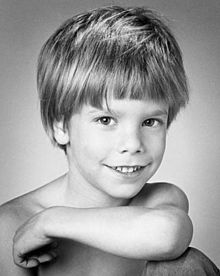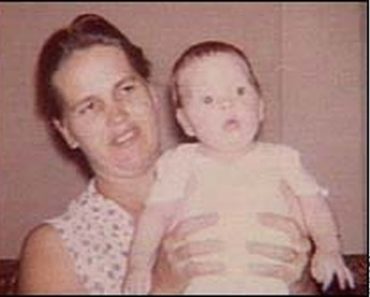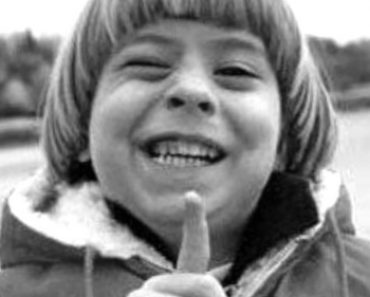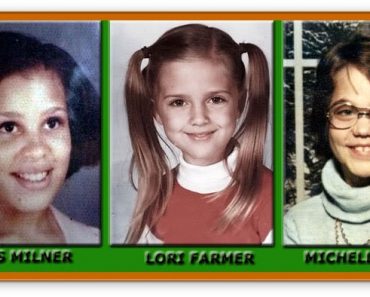Etan Patz / Unsolved Case

Etan Patz
The Milk Carton Boy
Unsolved Case
Disappeared : May 25, 1979
Etan Kalil Patz was born on October 9, 1972. He was an American boy who was six years old on May 25, 1979, when he disappeared on his way to his school bus stop in the SoHo neighborhood of Lower Manhattan.
The disappearance of Etan Patz helped launch the missing children movement, which included new legislation and new methods for tracking missing children. Several years after he disappeared, Etan was one of the first children to be profiled on the “photo on a milk carton” campaigns of the early 1980;s. In 1983, President Ronald Reagan designated May 25th as National Missing Children’s Day in the United States.
Etan Patz
Decades later, it was determined that Etan Patz had been abducted and murdered the same day that he went missing. The case was reopened in 2010 by the Manhattan District Attorney’s office. In 2012, the FBI excavated the basement of the alleged crime scene near the Patz residence but discovered no new evidence. Pedro Hernandez, a suspect who confessed to the kidnapping and murder of the missing boy, was charged and indicted.
In 2014, the case went through a series of hearings to determine whether or not Hernandez’s statements before he received his Miranda rights were legally admissible at trial. His trial began in January 2015 and it ended with a mistrial that May. A retrial began on October 19, 2016, and it was concluded on February 14, 2017. After nine days of deliberations, the jury found Hernandez guilty. He was sentenced to 25 years to life on April 18, 2017. He will not be eligible for parole for 25 years.
The Disappearance of Etan Patz
On the morning of May 25, 1979, 6 year old Etan Patz left his apartment at 113 Prince Street by himself for the first time. He was planning to walk two blocks to board a school bus at West Broadway and Prince Street. He was wearing a black “Future Flight Captain” pilot cap, a blue corduroy jacket, blue jeans and blue sneakers with fluorescent stripes. He never arrived at that bus stop.
At school, Etan’s teacher noticed his absence but did not report it to the principal. When Etan did not return home after school, his mother Julie called the police. At first, detectives considered the Patzes to be possible suspects but quickly determined they had no involvement. An intense search began that evening, using nearly 100 police officers and a team of bloodhounds. The search continued for weeks. Neighbors and police canvassed the city and placed missing-child posters featuring Etan’s portrait, but this resulted in few leads.
Etan’s father Stanley was a professional photographer and had a collection of photographs he had taken of his son. His photos of Etan were printed on countless missing-child posters and milk cartons. They were also projected on screens in Times Square.
Jose Ramos
Assistant United States Attorney Stuart R. GraBois received the case in 1985 and identified Jose Antonio Ramos, a convicted child sexual abuser who had been a friend of Etan’s former babysitters, as the primary suspect in the child’s disappearance.
In 1982, multiple boys had accused Ramos of trying to lure them into a drain pipe in the area where Ramos was living. When police searched the drain pipe, they found photographs of Ramos and young boys who resembled Etan. GraBois eventually found out that Ramos had been in custody in Pennsylvania in connection with an unrelated child molestation case.
In 1990, GraBois was deputized in order to help prosecute a case against Ramos for sexually abusing children and to obtain further information about Etan’s case. When first questioned by GraBois, Ramos stated that, on the day when Etan disappeared, he had taken a young boy back to his apartment to rape him. Ramos said that he was “90 percent sure” it was the boy whom he later saw on television. However, Ramos did not use Etan’s name. He also claimed he had “put the boy on a subway”.
In 1991, while Ramos was incarcerated, a jailhouse informant told GraBois and FBI agent Mary Galligan that Ramos had told him he knew what had happened to Etan. Ramos even drew a map of Etan’s school bus route, indicating that he knew that Etan’s bus stop was the third one on the route. In a special feature on missing children, the New York Post reported on October 21, 1999, that Ramos was the prime suspect in Etan’s disappearance. Ramos had been known by the Patz family and was the prime suspect all along, but in the early 1980’s authorities were unable to prosecute Ramos.
Etan Patz’s body was never found. He was declared legally dead on June 19, 2001. Stan and Julie Patz pursued and won a civil case against Ramos in 2004. They were awarded a symbolic sum of $2 million, which they have never collected. Ramos has never been criminally prosecuted for the murder of Etan Patz. Every year, on Etan’s birthday and the anniversary of his disappearance, Stan Patz sent Ramos a copy of his son’s missing-child poster. On the back, he typed the same message: “What did you do to my little boy?”
Ramos has always denied that he killed Etan Patz. He served a 20-year prison sentence in the State Correctional Institution in Dallas, Pennsylvania, for child molestation. He was released from prison on November 7, 2012. Soon after his release however he was arrested on a Megan’s Law violation.
Stan and Julie Patz had the 2004 judgment against Ramos dismissed after the 2015 trial of Pedro Hernandez convinced them that Ramos was not responsible for their son’s death.
Etan Patz Case Reopened
Manhattan District Attorney Cyrus Vance, Jr. officially reopened the case on May 25, 2010. On April 19, 2012, the FBI and the New York City Police Department investigators began excavating the SoHo basement of 127-B Prince Street, near the Patz home. This residence had been newly refurbished shortly after Etan’s disappearance in 1979, and the basement had been the workshop and storage space of a handyman. After a four-day search, investigators announced that there was “nothing conclusive found.”
A Confession
On May 24, 2012, New York Police Commissioner Raymond Kelly announced that a man was in custody who had implicated himself in Etan’s disappearance. According to The New York Times, a law enforcement official identified the man as 51-year-old Pedro Hernandez of Maple Shade, New Jersey, and said that he had confessed to strangling the child.[He stated in his written confession to police, “I’m sorry, I shoke him.” According to a 2009 book about the case, After Etan, Etan had a dollar and had told his parents he planned to buy a soda to drink with his lunch. At the time of Etan’s disappearance, Hernandez was an 18-year-old convenience store worker in a neighborhood corner store. Hernandez said that he had wrapped the dead boy in plastic and put him in a box. For three days he let the box sit in storage before setting it out as trash. Hernandez was charged with second-degree murder. According to a New York Times report from May 25, 2012, the police at that time had no physical evidence to corroborate his confession.
Corroborating Evidence
In 2012 a man from New Jersey, Jose Lopez, reached out to investigators: He believed that Hernandez, Lopez’s brother-in-law, was in fact responsible for Etan’s disappearance. Statements by Hernandez’s sister, Nina Hernandez, and Tomas Rivera, leader of a Charismatic Christianity group at St. Anthony of Padua, a Roman Catholic church in Camden, New Jersey, indicated that Hernandez may have publicly confessed in the presence of fellow parishioners in the early 1980;s to murdering Etan Patz. According to Hernandez’s sister, it was an “open family secret that he had confessed in the church.” A New York grand jury indicted Hernandez on November 14, 2012, on charges of second-degree murder and first-degree kidnapping. His lawyer has stated that Hernandez was diagnosed with schizotypal personality disorder, which includes hallucinations. The lawyer has also said his client has a low IQ of around 70, “at the border of intellectual disability.”
article continued below
WickedWe Recommends:
After Etan
After Etan: The Missing Child Case that Held America Captive is the true story of 6 year Etan Patz, who disappearred while walking to the school bus in 1979. He was the first missing child to appear on the milk cartons.
Author Lisa Cohen draws on hundreds of interviews and nearly twenty years of research, including access to the personal files of the Patz family, revealing, for the first time, the entire dramatic tale of Etan’s disappearance:
Trials and Conviction
On December 12, 2012, Hernandez pleaded not guilty to two counts of murder and one count of kidnapping in a New York court. In April 2013, Harvey Fishbein, Hernandez’s legal aid criminal defense lawyer, filed a motion to dismiss the case, citing that Hernandez’s “confession in one of the nation’s most notorious child disappearances was false, peppered with questionable claims and made after almost seven hours of police questioning”. The next month, however, New York Supreme Court Justice Maxwell Wiley ruled that the evidence was “legally sufficient to support the charges” and that the case could move forward. He also ordered a hearing to determine whether the defendant’s statements could be used at trial.
Hernandez had a hearing in September 2014 about whether his statements made prior to police giving him his Miranda rights were legally admissible at trial. This would be influenced by whether or not he felt free to leave during the time before he was informed of his Miranda rights. The hearing was also to determine whether or not he understood the significance of the Miranda rights and was competent to waive them when he did so. This was significant because it would decide whether any statements made after that point by Hernandez were legally admissible at trial. The actual truth or falsehood of the statements was not the focus of the hearing; rather, the question of the statements’ truthfulness was to be discussed in the trial, which began on January 5, 2015.
The case resulted in a mistrial in May 2015 due to a hung jury, which was deadlocked 11 against 1 for conviction. A retrial began on October 19, 2016, in a New York City court, with jury deliberations in February 2017. On February 14, 2017, Hernandez was found guilty of kidnapping and felony murder. Sentencing was scheduled on February 28, with Hernandez facing up to 25 years to life in prison. However, Hernandez’s attorneys were granted a delay so as to be able to challenge the verdict, and no new sentencing date was set.
On April 18, 2017, Hernandez was sentenced to life in prison with the possibility of parole after serving at least 25 years.

source: wikipedia | wildabouttrial.com | .thewrap
This site contains affiliate links. We may, at no cost to you, receive a commission for purchases made through these links













































